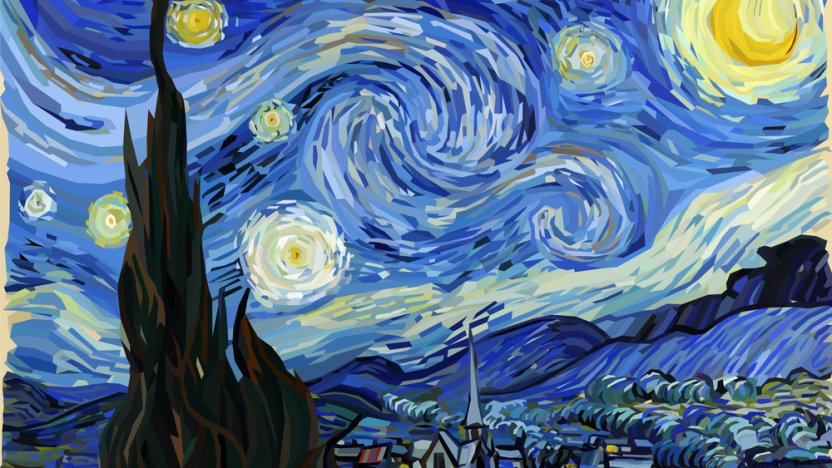Starting a Visual Trip Through the Lyrical Interpretations of Nature in Stylist Landscapes
In the realm of art history, the Stylist motion stands out as an essential duration that revolutionized the means nature was depicted on canvas. Musicians such as Claude Monet, Camille Pissarro, Edgar Degas, Berthe Morisot, and Vincent Van Gogh recorded the significance of the natural world through their unique analyses, developing landscapes that go beyond simple graph. Each brushstroke, each play of light and darkness, and each color choice in their works talks quantities regarding the artists' deep link to nature and their capacity to equate its charm onto the canvas. As we check out the lyrical analyses of nature in Stylist landscapes, we are invited to immerse ourselves in a globe where truth and emotion link, using a peek into the musicians' profound appreciation for the environment.
The Exciting Brushstrokes of Claude Monet
Claude Monet's mastery of brushstrokes transcends simple strategy, imbuing his landscapes with an ethereal quality that fascinates and captivates customers - trump art. His innovative usage of color and light, combined with his unique brushwork, produces a feeling of motion and life within his paints. Monet's renowned series of jobs depicting water lilies and his famous haystacks display his ability to catch the short lived results of light and ambience

Checking Out Light and Shadow With Camille Pissarro
Symbolizing a similar respect for the interplay of light and darkness, Camille Pissarro's creative vision unravels as a harmonious exploration of the all-natural globe's luminous nuances. Pissarro, a vital figure in the Impressionist motion, masterfully caught the vibrant relationship between light and darkness in his landscapes. His experienced use of color and brushwork enabled him to share the refined shifts in light that define different times of day and periods.
Pissarro's paints frequently feature spotted sunshine infiltrating leaves, casting elaborate patterns of light and darkness on the planet listed below. In jobs such as "Hoar Frost, the Result of Snow, Pontoise," Pissarro skillfully portrays the crisp brightness of winter months sunlight juxtaposed with the great darkness that specify the snowy landscape. By welcoming both light and shadow in his structures, Pissarro invites customers to submerse themselves in the all-natural appeal and short-term results of light in the globe around them.

With Pissarro's works, we are reminded of the transformative power of light and shadow, inviting us to pause and appreciate the fleeting minutes of elegance existing in the day-to-day landscapes that border us.
A Harmony of Color Styles by Edgar Degas
Edgar Degas manages a lively symphony of colors in his masterful artworks, instilling his make-ups with a vibrant interplay of tones that mesmerize the visitor's stare. Recognized mostly for his ballet professional dancers and intimate scenes of Parisian life, Degas expertly controlled colors to convey state of mind and motion in his paintings. trump art. His use bold, different shades and subtle tonal variations created a feeling of depth and vibrancy within his jobs
Degas' color palette typically consisted of abundant blues, deep greens, and cozy oranges, which he applied with confident brushstrokes to record the significance of his subjects. Whether representing a ballerina mid-performance or a team of buddies conversing at a coffee shop, Degas' colors not just illustrated the scene yet likewise stimulated a feeling of feeling and energy.
In Addition, Degas' experimentation with light and darkness added an additional layer of intricacy to his color make-ups, improving the overall ambience of his paintings (trump art). Via his proficient control of color, Degas produced a visual harmony that remains to reverberate with viewers today
Discovering Nature's Peacefulness With Berthe Morisot
Berthe Morisot's artistic vision supplies a peaceful separation from the vivid color symphonies of Edgar Degas, as she records the serenity of nature in her expressive landscapes. Known for her fragile brushwork and intimate portrayals of daily life, Morisot's landscapes exude a Get More Info feeling of tranquility and harmony.
Morisot's paints frequently include soft, low-key tones that convey a feeling of peace and calmness. Her jobs, such as "The Cradle" and "Summer's Day," showcase her ability to record the subtle appeal of nature in a means that is both comforting and contemplative to the customer.
Unlike several of her Impressionist counterparts that focused on strong shades and vibrant structures, Morisot preferred to create mild, reflective scenes that welcome the audience to reflect and stop briefly. Via her skillful use light and shadow, Morisot creates a sense of harmony that reverberates with the visitor on a deep emotional level.
The Emotional Landscapes of Vincent Van Gogh
Vincent Van Gogh's landscapes vividly communicate a deepness of feeling via their vibrant brushwork and meaningful usage of shade. The Dutch post-impressionist musician is renowned for his capacity to record raw and extreme feelings in his paintings, transcending standard depictions of nature. Van Gogh's turbulent individual life, noted by psychological wellness battles, substantially affected his art, instilling his landscapes with a feeling of anxiousness, sorrowful, or exuberance.
In works such as "Starry Evening" and "Wheatfield with Crows," Van Gogh's swirling brushstrokes and vivid shade selections stimulate a profound emotional response from viewers. The rough skies and agitated landscapes in his paints mirror his internal turmoil and emotional turbulence, welcoming visitors to look into the complexities of his psyche.
Van Gogh's distinct visual language, characterized by overstated viewpoints and vibrant use shade, produces landscapes that resonate with view website viewers on a deeply emotional degree. With his art, Van Gogh invites us to see nature not equally as an exterior fact however as a mirror of our innermost feelings and feelings.
Verdict
In verdict, the impressionist landscapes of artists such as Claude Monet, Camille Pissarro, Edgar Degas, Berthe Morisot, and Vincent Van Gogh offer a unique and exciting visual interpretation of nature. Via their usage of brushstrokes, shade, light, and emotion, these musicians have produced a symphony of pictures that stimulate a feeling of peacefulness and charm in the all-natural world. Their jobs remain to motivate and bewitch viewers with their lyrical analyses of the landscapes around us.
Each brushstroke, each play of light and shadow, and each shade selection in their works speaks quantities about the artists' deep link to nature and their capacity to translate its appeal onto the canvas. His cutting-edge use of color and light, incorporated with his distinctive brushwork, produces a feeling of activity and life within his paintings. His skilled usage of shade and brushwork allowed him to communicate the refined changes in light that define various times of day and periods.
